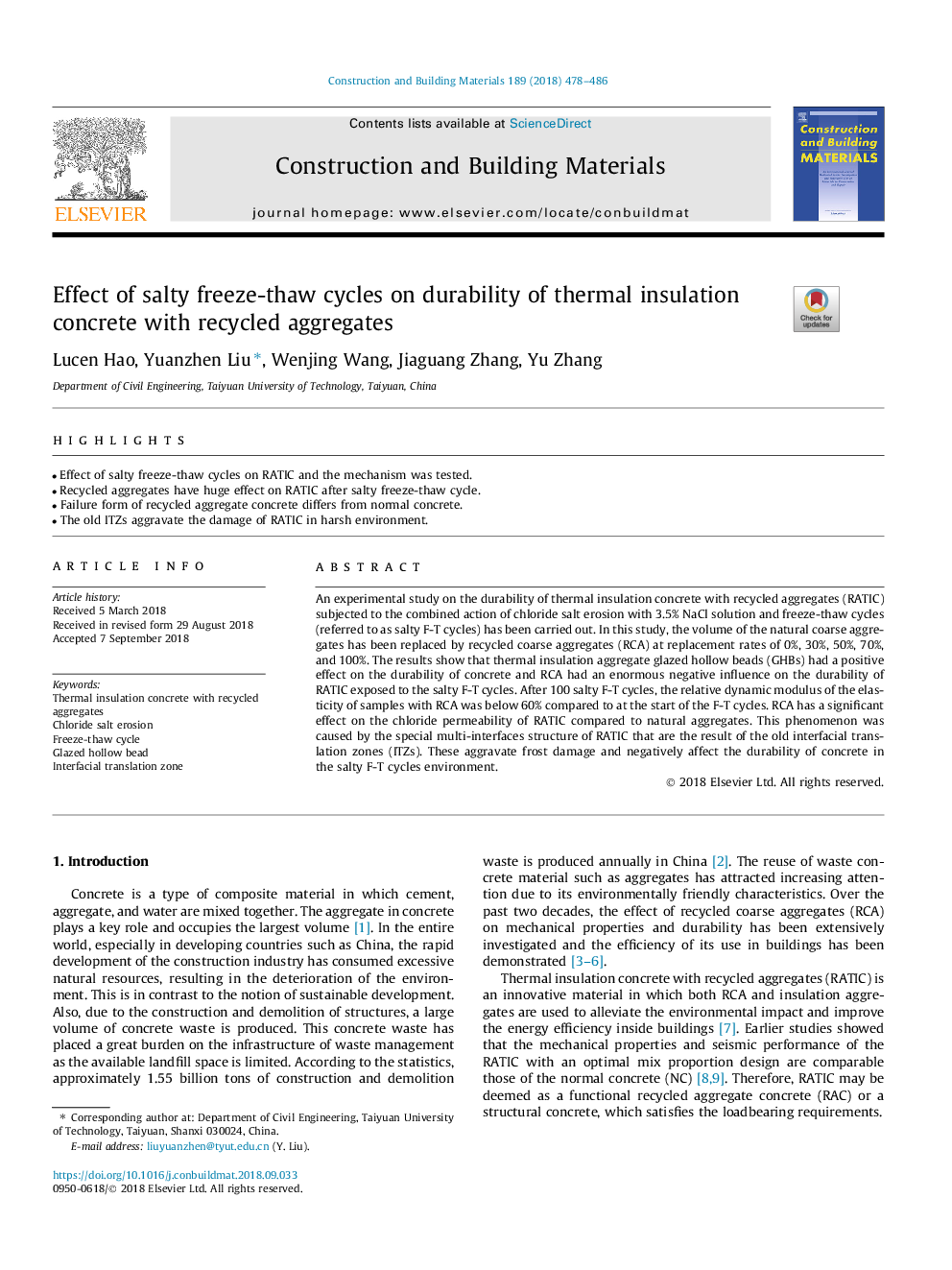| Article ID | Journal | Published Year | Pages | File Type |
|---|---|---|---|---|
| 10145692 | Construction and Building Materials | 2018 | 9 Pages |
Abstract
An experimental study on the durability of thermal insulation concrete with recycled aggregates (RATIC) subjected to the combined action of chloride salt erosion with 3.5% NaCl solution and freeze-thaw cycles (referred to as salty F-T cycles) has been carried out. In this study, the volume of the natural coarse aggregates has been replaced by recycled coarse aggregates (RCA) at replacement rates of 0%, 30%, 50%, 70%, and 100%. The results show that thermal insulation aggregate glazed hollow beads (GHBs) had a positive effect on the durability of concrete and RCA had an enormous negative influence on the durability of RATIC exposed to the salty F-T cycles. After 100 salty F-T cycles, the relative dynamic modulus of the elasticity of samples with RCA was below 60% compared to at the start of the F-T cycles. RCA has a significant effect on the chloride permeability of RATIC compared to natural aggregates. This phenomenon was caused by the special multi-interfaces structure of RATIC that are the result of the old interfacial translation zones (ITZs). These aggravate frost damage and negatively affect the durability of concrete in the salty F-T cycles environment.
Keywords
Related Topics
Physical Sciences and Engineering
Engineering
Civil and Structural Engineering
Authors
Lucen Hao, Yuanzhen Liu, Wenjing Wang, Jiaguang Zhang, Yu Zhang,
